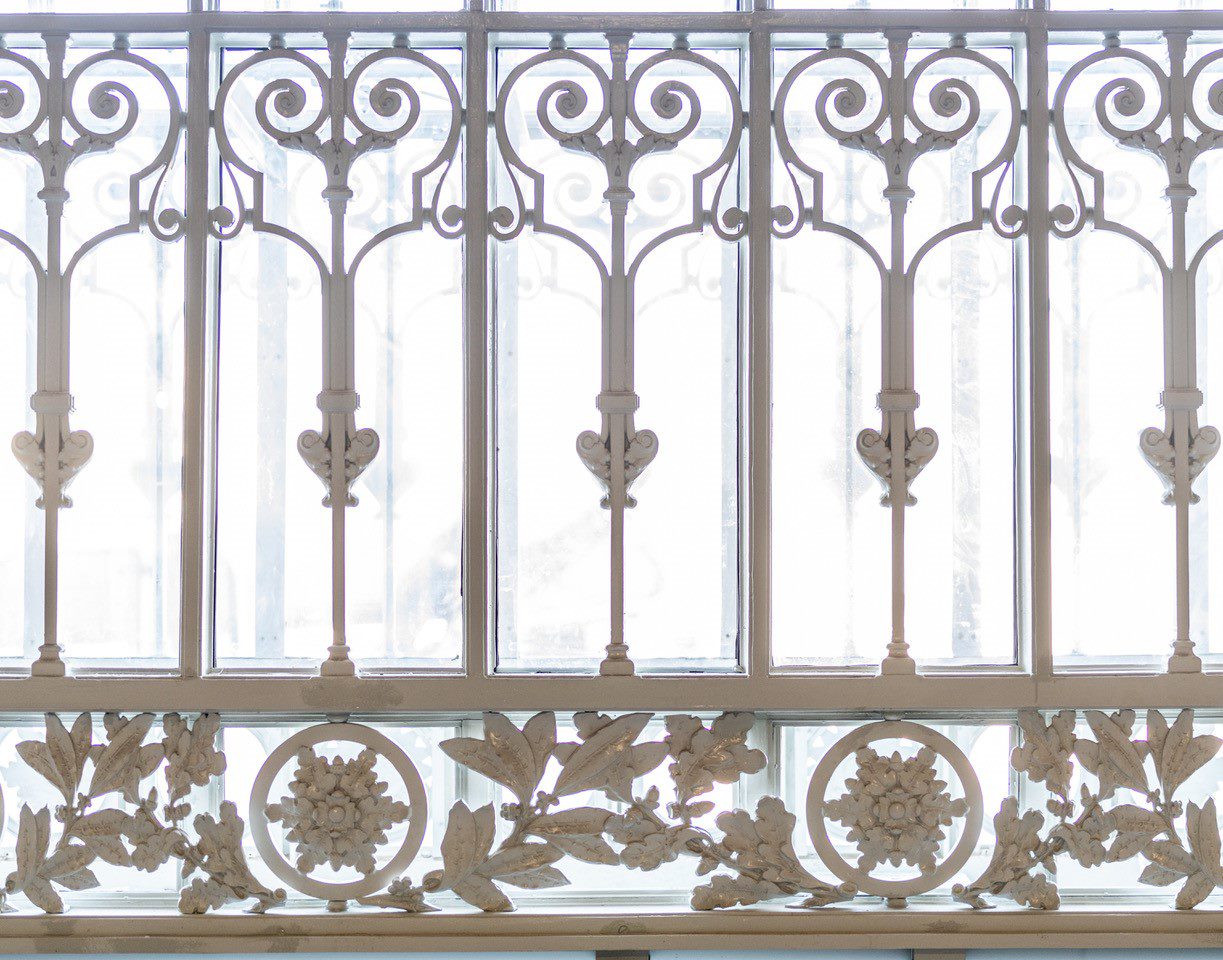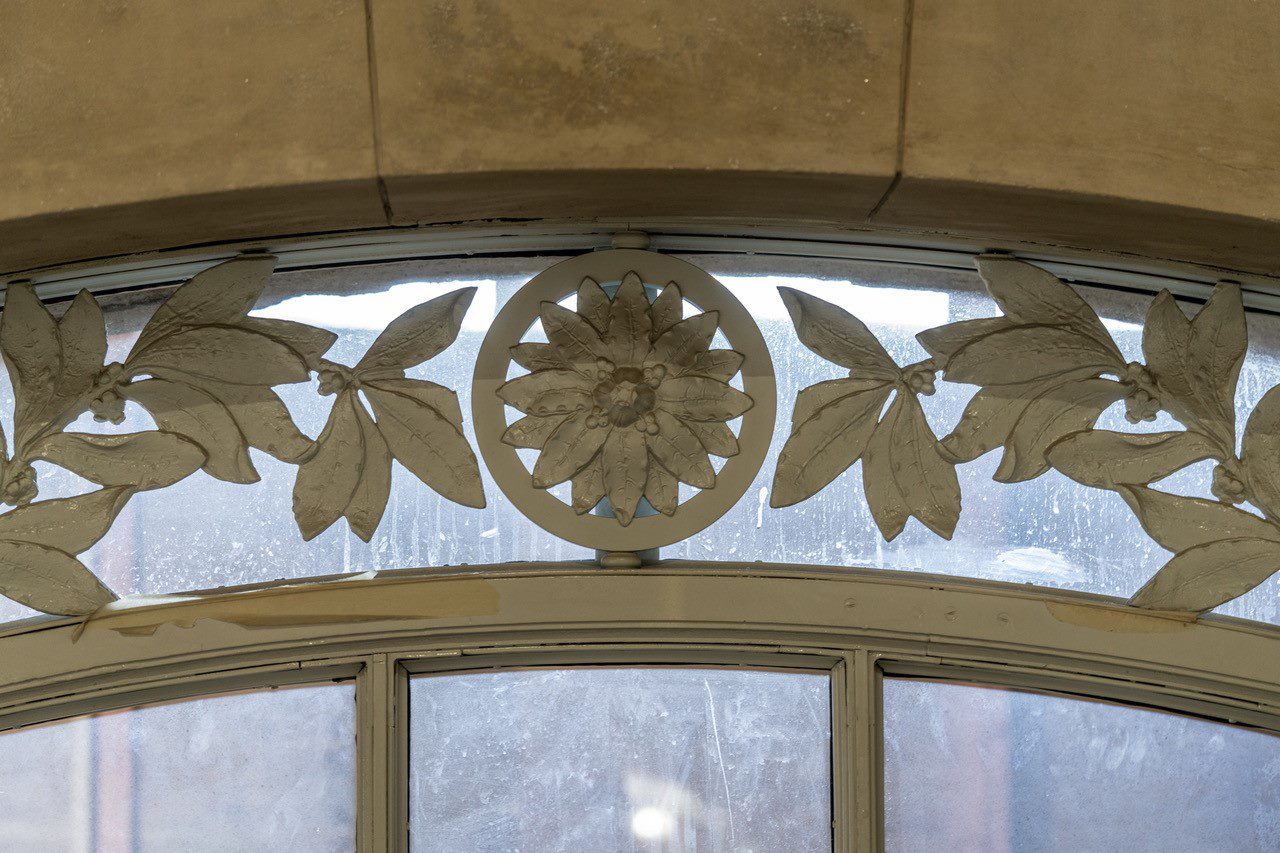Cross-Functional Teams at Ford Use 3D Printing to Capture Fine Details of Window Decorations, Ceiling Tiles for Michigan Central Station
April 5, 2022
By Paul Kampe
While architectural restoration isn’t an area of expertise you might expect to find at an automobile company, several teams at Ford are collaborating to deploy their skills to restore some of the finest, most intricate details of Michigan Central Station, which will serve as the anchor of the Michigan Central mobility innovation district when it opens next year.
The very technology typically used to push the boundaries of automotive research and development is now being incorporated to re-create hundreds of Beaux Arts-style elements of the century-old former train depot. This includes the beautiful rosettes and filigree that adorn the large arch windows along the north, east and west sides of the building.
Multiple skill teams at Ford, including research and advanced engineering, Ford Land, manufacturing technology development, and non-destructive evaluation are leveraging their expertise in 3D computer-aided design processing, 3D scanning and 3D printing to re-create the detailed window elements, as well as a portion of the building’s ceiling tiles.
Bob Bedard, supervisor, additive manufacturing plastics, said printing helps to preserve the original aesthetic of the rosettes, filigree and ceiling tiles in their architectural element.
Many original elements had either been removed or were broken between the time the station closed in 1988 and when Ford began its restoration 30 years later. The teams initially used photographs of the originals to create replicas, but they were able to start 3D scanning the items when some of the originals were donated back to Ford. They were scanned, in part, by Ford’s manufacturing technology development team.
Before the scans could be printed, they were reverse engineered by members of Ford’s non-destructive evaluation team using a CAD process that restores each scan to their original design. Scans of broken pieces were combined, and missing areas were redesigned. Others were made manifold, resized, smoothed and restored with various anchor points added in. Then, the manufacturing technology development team was able to print the rosettes and filigree at Ford’s Advanced Manufacturing Center in Redford Township, Michigan.
“Ford could have decided to just modernize Michigan Central Station, but they’re taking great efforts to make sure this thing really reflects the way this building looked and felt inside and outside,” said Harold Sears, additive manufacturing technical leader for manufacturing.
The rosettes and filigree tie in with other botanical elements throughout Michigan Central Station as well. “They bring in this beautiful element to the windows,” said Bedard. “This helps continue that design language throughout.”
The thermoplastic polymer used for the new parts is much lighter, making for much easier installation than the originals. Whereas a tool would have been required to form an original metal part, a 3D printer deposits material in the proper position and at the right temperature. Plus, the printing process takes just days instead of weeks or even months.
Recently, hundreds of the digital replicas were unveiled. Design modifications for the last three arch windows, for which new frames were built, are being finalized and will soon be in place. The majority of the circular rosettes are about 12 inches wide, while most of their branched filigree, which feature either laurel leaves or an oak leaf pattern, are about 26 inches long. Among the nearly 550 pieces are 20 variants of differing lengths and flower positioning, printed in six batches, each taking approximately three weeks between May and November. The pieces mark Ford’s first use of polymer additive manufacturing for architectural construction.
Gary Marshall, project manager, Detroit development, Ford Land, said many people may not even realize Ford uses 3D printing to support vehicle development, let alone the restoration of one of the region’s most iconic buildings. “It is really cool for Ford to be able to show its capabilities,” he said. “It is a melding of the teams and it has worked out really well.”
The original handcrafted window rosettes and filigree are matched as closely as possible through 3D scanning. Their color, Austere Gray, was selected following a study in collaboration with paint specialist Sherwin-Williams. The process helped determine the best match to the original color and the most appropriate color for the lighting.
The floral portions of the square 6.5-inch ceiling tiles in what were once the station’s adjoining tea room and reading rooms will be re-created and the ceiling will be painted Alabaster. The teams had considered printing the ceiling tiles in their entirety, but they were too large. The rest of the tiles will be created using glass fiber-reinforced gypsum, with the printed florets placed in the middle of each piece.
The project, which began in 2019 with discussions on how 3D printing could be best implemented into restoration of Michigan Central Station, required months of 3D scanning that followed in 2020.
Ford was an early adopter of 3D printing, as well as the technology that allows the non-destructive evaluation team to modify scan files for printing, said Beverly Minicilli, senior engineer, machining. Ford has used the technology to re-create a steam injector for an 1890s train at Henry Ford Museum of American Innovation, and for several parts for restoration of Fairlane Estate, including re-creating original bronze thermostats.
“Anything you need to duplicate or replicate, you can do with scan data,” said Minicilli.
Bedard said the teamwork involved in this project has made it the most satisfying work he has ever been a part of. “This is not just a research and advanced engineering project – this is a collaborative project,” he said. “We made these parts in-house – Ford made these parts. Part of our drive as a company is to bring new technologies into production applications when they’re ready, and to always be innovating to find a better, more sustainable, safer way to bring things to fruition.”
Bringing modern technology to the restoration of a 100-plus-year-old building is poetic, he added. “It’s a beautiful thing we could do that for this priceless landmark.”


Photo Credit: Stephen McGee
Cross-functional Ford team, from left: Martin Jones (non-destructive evaluation lab), Bob Bedard (research and advanced engineering), John Phillips, Jay Haubenstricker and Scott Gafken (all from manufacturing technology development), Beverly Minicilli (non-destructive evaluation lab). Photo by Gary Marshall (Ford Land, not pictured).


